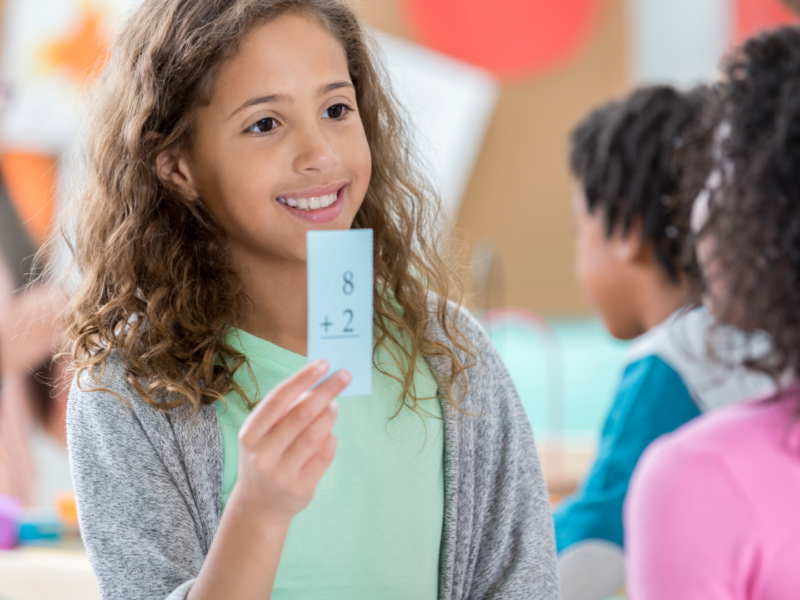Cerebrate Blog.
Explore strategies for skill development

5 Engaging Ways to Practice Working Memory Skills in Grades 1-4
Posted In Application On January 23, 2025
To practice working memory skills effectively, executive function instruction is essential for student success. One of the most critical executive function skills for elementary students to develop is working memory. To improve student performance and focus, it’s important to provide opportunities to practice working memory skills. Working memory—the ability to retain and manipulate information for short periods—plays a key role in learning, problem-solving, and maintaining attention. In this blog, we’ll explore five practical and engaging strategies to help students practice working memory skills while boosting their confidence, focus, and academic performance.
-
Create Mnemonic Devices Together
Mnemonic devices are powerful executive function tools that can make information more memorable for young learners. For your upcoming lessons, invite your students to collaborate on developing mnemonic devices for key facts or concepts. For example, to remember the order of the planets, students might create a sentence like, “My Very Eager Mother Just Served Us Nachos.” Encourage students to experiment with different types of mnemonic devices, such as acronyms, rhymes, or visual associations. Afterward, have students reflect on which strategies they found most effective. This activity not only reinforces working memory but also fosters student engagement and teamwork.
-
Use a “Later List” to Manage Distractions
Helping students manage distractions is a cornerstone of teaching executive function skills. Start by giving each student a blank piece of paper labeled “Later” at the top. Throughout the day, encourage them to write or draw any distracting thoughts they have, such as ideas, worries, or questions, on this paper. Set aside time at the end of the day for students to review their “Later List” and reflect on what thoughts were important but not urgent. This strategy promotes self-regulation and helps students stay focused on their tasks while also practicing working memory skills by recalling their distractions later.
-
Monitor Attention with Tally Cards
Teaching students to monitor their focus is a key aspect of executive function instruction. Provide each student with a note card divided into two sections: a “Yes” column for paying attention and a “No” column for being distracted. Throughout the day, prompt students to reflect on their behaviors and mark a tally under the appropriate column. At the end of the week, challenge students to review their tally cards and set goals for improving their “Yes” marks. This activity not only helps students practice working memory skills but also builds self-awareness and supports behavior management.
-
Share Examples of Working Memory in Action
Over the course of a week, ask students to observe and share examples of people using working memory in their daily lives. For instance, a student might note that a cashier remembers multiple items to scan or that a classmate recalls instructions for a group project. As students share, compile their examples into a class list that highlights the practical applications of working memory. This activity makes the executive function definition more concrete and helps students understand the importance of practicing working memory skills in real-world contexts.
-
Build Knowledge with Flashcards
Flashcards are a classic yet highly effective executive function tool for practicing working memory skills. Provide students with pre-made flashcards or let them create their own using vocabulary words, math facts, or other essential information. Set aside time each day for students to review their cards. Encourage them to move a card to the “I know this” pile after recalling it correctly three times. This process helps students track their progress, build confidence, and improve academic performance through consistent practice.
Boost Student Success with Executive Function Strategies
Helping young learners practice working memory skills is a cornerstone of solving executive function challenges and improving students’ academic performance. By embedding executive function instruction into your daily routine, you’re empowering your students to develop skills that will benefit them throughout their academic journey and beyond.
A teacher is helping students practice working memory skills.
More Resources to Practice Working Memory Skills
Looking for additional ways to develop working memory skills? Check out our blog posts for grades 5-8 and grades 9-12. Don’t forget to sign up for our newsletter to receive the latest updates on executive function learning strategies. For comprehensive lessons, visit Cerebrate’s executive function curriculum to explore tools designed to enhance your students’ executive function skills.


